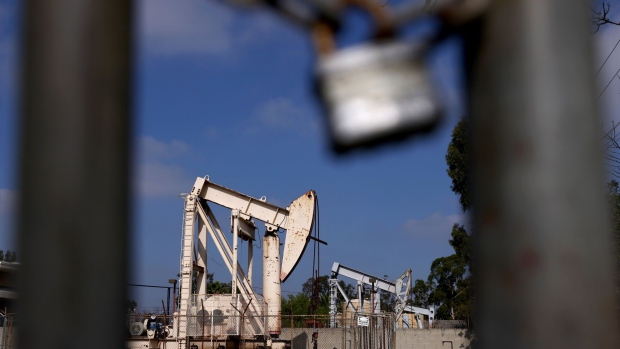Mar 27, 2024
Biden’s Methane Crackdown Reaches Oil Wells on Federal Land
, Bloomberg News

(Bloomberg) -- The Biden administration is finalizing requirements meant to stem methane emissions from oil and natural gas wells on public land nearly a decade after the federal government first moved to crack down on the greenhouse gas releases.
The final rule imposed by the Interior Department’s Bureau of Land Management requires operators of oil and gas projects on federal land to do more to find and arrest methane leaks. It also sets limits on how much natural gas can be flared — or burned off — before companies are charged royalties on the waste.
The measure, a key piece of President Joe Biden’s climate agenda, builds on a suite of other regulations meant to discourage emissions of methane, a particularly potent greenhouse gas. Methane, the main component of natural gas, is estimated to be 84 times more powerful than carbon dioxide at warming the atmosphere during the first two decades after it is released. Limiting methane releases is seen as critical to constraining global warming and keeping temperature rise below 1.5C, a tipping point for avoiding the most catastrophic consequences of climate change.
Biden administration officials cast the regulation as a fiscally and environmentally sound policy, since the gas extracted from federal land is owned by US taxpayers. The rule aims to stop both accidental and intentional releases of that fuel — including leaks from pipelines and other infrastructure as well as purposeful discharges from oil wells. Oil companies often turn to that practice, known as venting, when they don’t have sufficient pipeline capacity to ship gas to markets.
The measure helps “prevent waste, protect our environment and ensure a fair return to American taxpayers,” Interior Secretary Deb Haaland said in a news release. “By leveraging modern technology and best practices to reduce natural gas waste, we are taking long-overdue steps that will increase accountability for oil and gas operators.”
Oil and gas companies who have battled the requirements warned they will hike costs and further discourage development on federal land.
“Overlapping regulations and lack of coordination between policymakers could hinder progress, create unnecessary barriers to development on federal lands and result in regulatory incoherence,” said Holly Hopkins, upstream policy vice president at the American Petroleum Institute.
The measure comes on top of separate Environmental Protection Agency requirements for stifling methane leaks that largely target oil infrastructure on private land. The EPA is also moving to impose a congressionally mandated fee on methane releases.
The new Interior Department rule is narrower, in that it applies just to oil and gas facilities on federal and tribal lands managed by the Bureau of Land Management, including about 89,000 producing wells. About one-tenth of US oil and natural gas production comes from federal and tribal lands.
Under the rule, new drilling permit approvals would be contingent on companies taking “reasonable precautions” to prevent waste. However, the government will make exceptions when some gas is “unavoidably lost” because of limited pipeline capacity or through certain operations at the sites.
Producers would spend an estimated $19.3 million each year complying with the requirements, according to the bureau’s estimates. The changes would allow them to recover an additional $1.8 million worth of gas that would have otherwise been wasted, the agency said. And the government, in turn, is expected to collect an additional $51 million each year in additional royalties.
That makes the measure a triple win for taxpayers, producers and neighboring communities, said Jon Goldstein, senior director of regulatory and legislative affairs at the Environmental Defense Fund. “Strong Interior Department methane waste rules are integral for the United States to protect taxpayers from wasted energy resources.”
(Updates with details on the rule and stakeholder reaction starting in fourth paragraph.)
©2024 Bloomberg L.P.





